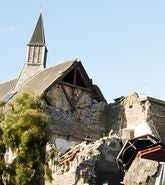Still ranked within the top three largest insured loss events in Australia’s history, it has now been twenty years since a hailstorm shattered roofs across the eastern suburbs of Sydney on April 14, 1999. And recent events continue to show the significant risk posed by severe hailstorms – on December 20, 2018, Sydney was hit by “…the worst hailstorm in twenty years” according to the Australia Bureau of Meteorology. On the anniversary of the 1999 storm, we look at both these events and discuss the return period of significant hail losses in Sydney.
For the 1999 event, the large hail associated with the storm damaged 24,000 homes and 70,000 automobiles along its path. There has been much written about the 1999 event, and in 2009 RMS published a detailed 10-year retrospective, but in short, this storm was unusual for several reasons:
- April 14 was outside of the normal storm season which tends to focus around September through to March
- The storm had hit late in the day, at 8 p.m. local time; most hit during the mid to late afternoon
- The size of the hailstones was very large, described at the time as “… cricket-ball, melon, or grapefruit sized…” and up to 12 centimeters (4.7 inches) wide.
Realizing the Return Period
What would the losses from the 1999 storm look like now? RMS has previously simulated the 1999 event using techniques from the RMS Australia Severe Convective Storm model to apply spatial noise to the size of the hail reaching the ground. We computed ground-up losses to our Industry Exposure Database for each of 200 realizations of the event and generated a distribution of losses which has an expected loss of AU$4 billion (US$2.87 billion). The latest trended loss from the Insurance Council of Australia (ICA) is AU$5.6 billion (US$4 billion) which fits comfortably inside our loss range.
Trending losses is far more complicated than it sounds as uncertainties compound over time. We have not trended the loss, we have run multiple realizations of the event over today’s exposure.
It is important to note the range of these losses from these realizations. Large hail can fall in the harbor, on golf courses and parks without causing loss or it can fall just a few hundred meters away on tiled roofs with very expensive consequences. This variability explains why it is so difficult to estimate losses accurately immediately after an event. Further, it demonstrates how a “repeat of the storm” is not the same as a “repeat of the loss”.
Since 1999, the market has debated the return period of the loss from this event. Ten years ago in our retrospective, we concluded the event was not a “once-in-a-lifetime” event from a hazard perspective and we agreed with other authors the loss return period was “decades” and certainly “less than 100 years”. Such estimates were supported by other historical events, notably the New Year’s Day hailstorm of 1947. Today we have another significant historical datapoint for comparison.
Sydney Hailstorm 2018
On December 20, 2018, Sydney was hit by another band of severe storms. Perhaps being so close to the Christmas holidays, the event escaped the intense media attention it would otherwise have garnered. Smashing roofs and windows, just two days after the storm, the ICA declared the incident a “catastrophe” and reported the industry had already received 25,000 claims. A fuller summary of the event written a week after the event can be found here.
What did the losses look like? We simulated 200 realizations of the December 2018 event on the RMS Australia Industry Exposure Database, and the expected loss is approximately AU$2.2 billion (US$1.57 billion) with a range from under AU$1 billion to over AU$4 billion.
Other sources including the three-month progress report from PERILs at AU$633 million (excluding motor) and press releases from large primaries, it is almost certain final losses will exceed AU$1 billion. Some analysts expect losses to reach AU$2 billion, in line with the expected ground-up loss from our simple simulation.
As mentioned previously, the final loss from events such as these is very sensitive to exactly where the large hail fell, so it is important to consider the loss distribution and not simply the mean. It seems likely the expected loss from December 2018 will be roughly one-half of the losses from April 1999. It is also important to note the overlap in the loss distributions for the two storms. A “lucky” repeat of the April 1999 event would not cause as much loss as an “unlucky” repeat of the December 2018 storm.
Comparing the expected losses for 1999 and 2018 against our Industry Loss Curve confirms our hypotheses from ten years ago. The 1999 loss is large, but nowhere close to the maximum credible hail loss.
Sydney experiences losses of AU$1.5 billion every decade or two, as evidenced by the events in 1947, 1990, 1999 and 2018. With tiled roofs continuing to be popular in the city, these will continue to be damaged by large hail. And if Sydney-siders can therefore expect insured losses in excess of $1.5bn every decade or so, it is very likely that children at school in the city today will see at least one 1999-sized loss, or larger, in their lifetimes.
Analysis provided by Sanjna Sethi, Alpana Das and the RMS Noida Knowledge Center plus Rohit Mehta and Callum Higgins.






